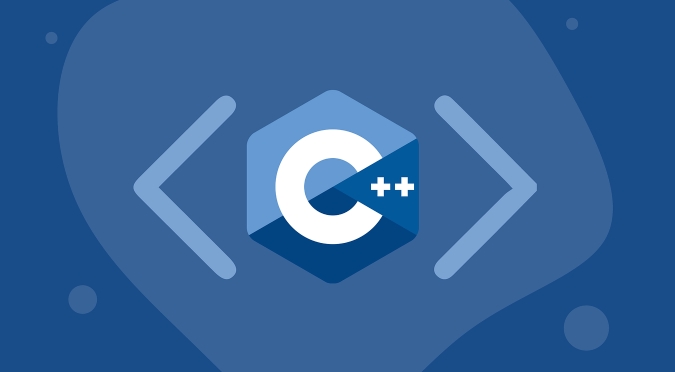The core of creating a class in C is to use the class keyword to define the structure and encapsulate data and operations. The specific steps are as follows: 1. Use the class keyword to define the class, pay attention to ending with a semicolon; 2. Create an object and access members through a dot. The objects on the heap need to use pointers and -> operators and manually release memory; 3. Use constructors to automatically initialize members, and multiple constructors can be overloaded; 4. Control access rights through private, protected, and public, which is default to private, and public members are visible to the outside world. Master these basic syntax and key points to quickly get started with the use of the class.

It is actually not difficult to create a class in C. The core is to use class keyword to define a structure and encapsulate data and operations together. As long as you master the basic grammar and a few key points, you can get started quickly.

1. Basic syntax: Use class to define classes
The first step in creating a class is to use the class keyword, followed by the class name, then a pair of curly braces {} , and finally end with a semicolon ; (this is easy to forget).

class Person {
public:
std::string name;
int age;
void introduce() {
std::cout << "Hi, I'm " << name << " and I'm " << age << " years old." << std::endl;
}
};-
public:means that the next member is public and can be accessed externally. -
nameandageare data members of the class. -
introduce()is a member function of the class that performs an operation.
Tip: Remember to add a semicolon after class definition, which is a common mistake for many novices.
2. Create an object and access a member
Classes are just templates, and when they are actually used, you need to create "instances", that is, objects.

Person p1; p1.name = "Alice"; p1.age = 30; p1.introduce(); // Output: Hi, I'm Alice and I'm 30 years old.
- Object
p1uses thePersonclass structure. - Access the properties and methods of the object through dots
.
If you want to create objects on the heap, you can do this:
Person* p2 = new Person(); p2->name = "Bob"; p2->age = 25; p2->introduce(); delete p2; // Don't forget to release the memory
- When using pointers, use
->to access members. - Remember to manually allocate memory, otherwise memory leaks.
3. Constructor makes initialization more convenient
Is it troublesome to manually set name and age every time? Initialization can be automatically completed with a constructor.
class Person {
public:
std::string name;
int age;
// Constructor Person(std::string n, int a) {
name = n;
age = a;
}
void introduce() {
std::cout << "Hi, I'm " << name << " and I'm " << age << " years old." << std::endl;
}
};How to use:
Person p3("Charlie", 28);
p3.introduce();- The constructor name is the same as the class name, and there is no return value.
- Multiple constructors can be overloaded to accommodate different situations.
4. Control access rights: private, protected and public
By default, the members of class are private and cannot be accessed directly from the outside. If you want some members to be visible to the outside world, add public: .
class Person {
private:
std::string name;
int age;
public:
Person(std::string n, int a) {
name = n;
age = a;
}
void introduce() {
std::cout << "Hi, I'm " << name << " and I'm " << age << " years old." << std::endl;
}
}; At this time, you cannot write p.name = "Tom" directly, but you can operate it through member functions.
-
private: Only accessible inside the class. -
protected: Similar to private, but allows subclass access (for inheritance). -
public: Anyone can access it.
Basically that's it. There are many advanced usages of C classes, such as destructors, operator overloading, friend functions, etc., but it is enough to master these four parts when you first get started.
The above is the detailed content of How to create a class in C ?. For more information, please follow other related articles on the PHP Chinese website!

Hot AI Tools

Undress AI Tool
Undress images for free

Undresser.AI Undress
AI-powered app for creating realistic nude photos

AI Clothes Remover
Online AI tool for removing clothes from photos.

Clothoff.io
AI clothes remover

Video Face Swap
Swap faces in any video effortlessly with our completely free AI face swap tool!

Hot Article

Hot Tools

Notepad++7.3.1
Easy-to-use and free code editor

SublimeText3 Chinese version
Chinese version, very easy to use

Zend Studio 13.0.1
Powerful PHP integrated development environment

Dreamweaver CS6
Visual web development tools

SublimeText3 Mac version
God-level code editing software (SublimeText3)

Hot Topics
 C Polymorphism : is function overloading a kind of polymorphism?
Jun 20, 2025 am 12:05 AM
C Polymorphism : is function overloading a kind of polymorphism?
Jun 20, 2025 am 12:05 AM
Yes, function overloading is a polymorphic form in C, specifically compile-time polymorphism. 1. Function overload allows multiple functions with the same name but different parameter lists. 2. The compiler decides which function to call at compile time based on the provided parameters. 3. Unlike runtime polymorphism, function overloading has no extra overhead at runtime, and is simple to implement but less flexible.
 What Are the Different Kinds of Polymorphism in C ? Explained
Jun 20, 2025 am 12:08 AM
What Are the Different Kinds of Polymorphism in C ? Explained
Jun 20, 2025 am 12:08 AM
C has two main polymorphic types: compile-time polymorphism and run-time polymorphism. 1. Compilation-time polymorphism is implemented through function overloading and templates, providing high efficiency but may lead to code bloating. 2. Runtime polymorphism is implemented through virtual functions and inheritance, providing flexibility but performance overhead.
 C : Is Polymorphism really useful?
Jun 20, 2025 am 12:01 AM
C : Is Polymorphism really useful?
Jun 20, 2025 am 12:01 AM
Yes, polymorphisms in C are very useful. 1) It provides flexibility to allow easy addition of new types; 2) promotes code reuse and reduces duplication; 3) simplifies maintenance, making the code easier to expand and adapt to changes. Despite performance and memory management challenges, its advantages are particularly significant in complex systems.
 C Destructors: Common Errors
Jun 20, 2025 am 12:12 AM
C Destructors: Common Errors
Jun 20, 2025 am 12:12 AM
C destructorscanleadtoseveralcommonerrors.Toavoidthem:1)Preventdoubledeletionbysettingpointerstonullptrorusingsmartpointers.2)Handleexceptionsindestructorsbycatchingandloggingthem.3)Usevirtualdestructorsinbaseclassesforproperpolymorphicdestruction.4
 Polymorphism in C : A Comprehensive Guide with Examples
Jun 21, 2025 am 12:11 AM
Polymorphism in C : A Comprehensive Guide with Examples
Jun 21, 2025 am 12:11 AM
Polymorphisms in C are divided into runtime polymorphisms and compile-time polymorphisms. 1. Runtime polymorphism is implemented through virtual functions, allowing the correct method to be called dynamically at runtime. 2. Compilation-time polymorphism is implemented through function overloading and templates, providing higher performance and flexibility.
 What Are the Various Forms of Polymorphism in C ?
Jun 20, 2025 am 12:21 AM
What Are the Various Forms of Polymorphism in C ?
Jun 20, 2025 am 12:21 AM
C polymorphismincludescompile-time,runtime,andtemplatepolymorphism.1)Compile-timepolymorphismusesfunctionandoperatoroverloadingforefficiency.2)Runtimepolymorphismemploysvirtualfunctionsforflexibility.3)Templatepolymorphismenablesgenericprogrammingfo
 C tutorial for people who know Python
Jul 01, 2025 am 01:11 AM
C tutorial for people who know Python
Jul 01, 2025 am 01:11 AM
People who study Python transfer to C The most direct confusion is: Why can't you write like Python? Because C, although the syntax is more complex, provides underlying control capabilities and performance advantages. 1. In terms of syntax structure, C uses curly braces {} instead of indentation to organize code blocks, and variable types must be explicitly declared; 2. In terms of type system and memory management, C does not have an automatic garbage collection mechanism, and needs to manually manage memory and pay attention to releasing resources. RAII technology can assist resource management; 3. In functions and class definitions, C needs to explicitly access modifiers, constructors and destructors, and supports advanced functions such as operator overloading; 4. In terms of standard libraries, STL provides powerful containers and algorithms, but needs to adapt to generic programming ideas; 5
 C Polymorphism: Coding Style
Jun 19, 2025 am 12:25 AM
C Polymorphism: Coding Style
Jun 19, 2025 am 12:25 AM
C polymorphismisuniqueduetoitscombinationofcompile-timeandruntimepolymorphism,allowingforbothefficiencyandflexibility.Toharnessitspowerstylishly:1)Usesmartpointerslikestd::unique_ptrformemorymanagement,2)Ensurebaseclasseshavevirtualdestructors,3)Emp






